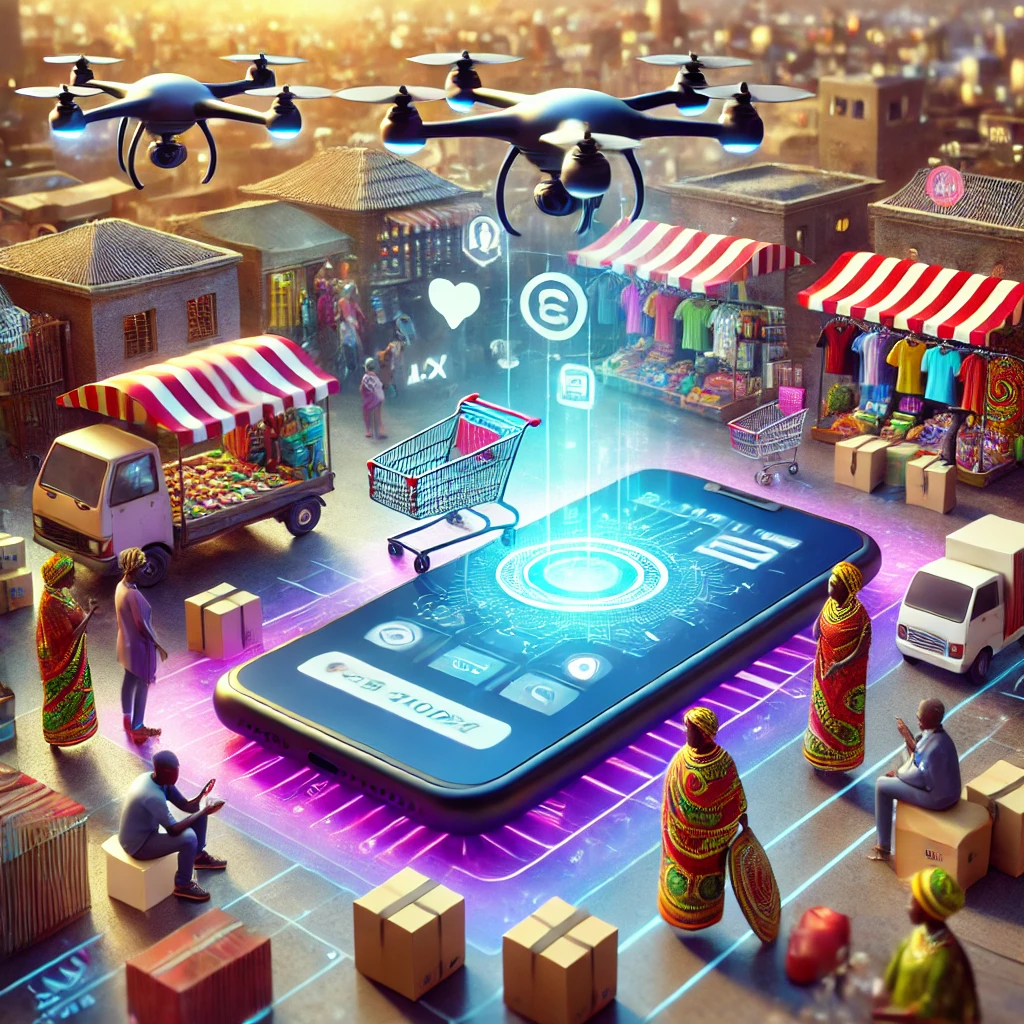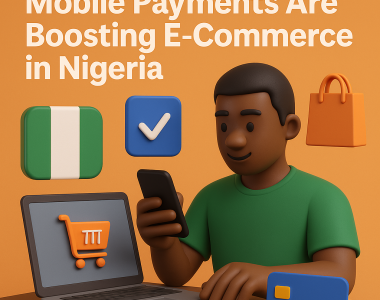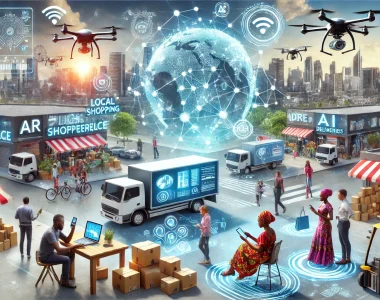
How Mobile Commerce (M-Commerce) is Driving Online Sales in Africa
Mobile commerce (M-Commerce) is revolutionizing the way consumers shop online, and Africa is experiencing a rapid surge in this trend. With over 1.3 billion people across the continent, and a growing internet penetration rate, M-Commerce is becoming a key player in driving online sales. Thanks to the widespread use of smartphones and increasing access to mobile networks, Africans are now able to make purchases, transfer money, and access services at the touch of a button.
In this blog, we’ll explore how M-Commerce is shaping the retail landscape in Africa, the challenges and opportunities it presents, and what the future holds. Additionally, we’ll provide resources, links, and key insights to help you understand the importance of this growing sector.
1. The Mobile-First Revolution in Africa
In Africa, mobile phones have surpassed desktop computers as the primary means of accessing the internet. The mobile-first revolution has transformed Africa’s digital ecosystem.
Key Stats:
- According to GSMA, mobile internet penetration in sub-Saharan Africa is expected to reach 50% by 2025.
- Africa’s smartphone market is growing rapidly, with over 500 million users as of 2023 (source: Statista).
Why is mobile commerce so effective in Africa?
- Affordable smartphones: Brands like Tecno, Infinix, and Samsung have made smartphones affordable for the masses.
- Mobile networks: 4G and even 5G networks are expanding, making it easier to shop online without high-speed broadband.
- Mobile money services: M-Pesa, Airtel Money, and others have paved the way for mobile payments, even in areas with limited banking infrastructure.
2. How M-Commerce is Transforming Retail in Africa
The traditional retail landscape in Africa is evolving. People no longer need to visit physical stores to purchase goods. M-Commerce has become an essential tool in driving sales, offering a seamless shopping experience from the convenience of a mobile device.
Examples of Successful M-Commerce Platforms in Africa:
- Jumia: Dubbed the “Amazon of Africa,” Jumia is one of the largest e-commerce platforms on the continent. It has become synonymous with online shopping across multiple African nations.
- Takealot: A leading online retailer in South Africa, offering everything from electronics to groceries.
- Pigiame: A Kenyan platform catering to a wide range of goods, from cars to electronics and real estate.
Key Benefits:
- Convenience: Consumers can shop from anywhere at any time, reducing the reliance on physical retail locations.
- Affordable payment methods: Mobile money, debit cards, and even “cash on delivery” allow a wider demographic to participate in e-commerce.
- Localization: Many African M-Commerce platforms have adapted their offerings to local tastes, providing region-specific products and services.
Resource: For more on African M-Commerce platforms, visit TechCrunch Africa.
3. Mobile Money: A Game-Changer for M-Commerce
One of the standout features driving M-Commerce in Africa is mobile money. Services like M-Pesa in Kenya have enabled millions of people to make payments, transfer money, and access financial services without needing a traditional bank account.
Why Mobile Money is Important:
- Financial inclusion: Mobile money platforms like M-Pesa have brought financial services to people without bank accounts, making it easier for them to engage in e-commerce.
- Cross-border transactions: Users can send money across borders quickly and cheaply, boosting cross-border trade in Africa.
- Safety and Security: Mobile money offers a secure alternative to carrying cash, which is especially valuable in regions where cash can be a target for theft.
Resource: Learn more about M-Pesa’s impact on financial inclusion in Africa through this report.
4. Challenges Faced by M-Commerce in Africa
While M-Commerce is thriving, it’s not without its challenges. These hurdles present both risks and opportunities for growth.
Challenges Include:
- Limited internet access: Although mobile internet use is growing, many rural areas still lack sufficient network coverage, limiting the potential for M-Commerce.
- Low literacy rates: Despite smartphone penetration, many people still struggle with using apps or websites for online shopping due to low literacy levels in some regions.
- Logistics and delivery: Efficient delivery infrastructure is a problem in many African countries. The last-mile delivery challenge (getting goods from a central hub to remote areas) is a key issue for M-Commerce businesses.
Interactive Discussion: What do you think is the most significant barrier to M-Commerce in Africa? Let’s discuss it in the comments below. How can businesses or governments overcome these challenges?
Resource: To understand more about the challenges of M-Commerce in Africa, visit GSMA’s M-Commerce Report.
5. The Future of M-Commerce in Africa
The future of M-Commerce in Africa looks promising. As mobile internet penetration increases and smartphones become even more affordable, the potential for mobile commerce to drive online sales continues to expand.
Key Trends to Watch:
- Artificial Intelligence and Chatbots: AI-powered chatbots will revolutionize the customer service experience, offering personalized shopping experiences and instant assistance.
- E-Wallet Integration: More retailers are integrating mobile wallets like Apple Pay, Google Pay, and local services into their platforms to facilitate smoother transactions.
- Local and Regional E-Commerce Growth: We’ll see a growing focus on regionally specific platforms, giving African businesses a greater opportunity to compete globally.
Resource: Want to explore predictions about the future of M-Commerce? Check out Deloitte’s Global Mobile Commerce Report.
Conclusion: The New Era of Shopping in Africa
M-Commerce is no longer a distant future but a present-day reality that’s reshaping how Africans shop and engage with the retail world. With mobile phones at the center of this transformation, M-Commerce presents immense potential for businesses and consumers alike.
The key to success will lie in overcoming infrastructure challenges, offering tailored mobile experiences, and further improving financial inclusion.
As mobile networks and digital payment systems improve, we’re likely to see a new wave of growth in Africa’s online sales ecosystem.
Interactive Q&A Section:
We’d love to hear your thoughts! How do you think M-Commerce will evolve in the next five years in Africa? What innovations do you expect to see?
Feel free to leave your comments, share this article, or explore the resources linked to learn more about the role of mobile commerce in Africa.





